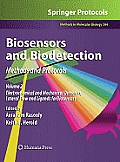 |
| Image courtesy of USGS.gov |
Published 12 July 2011
Thousands of residents across California are helping the U.S Geological Survey (USGS) build a dense network of seismic sensors across the state; as part of the Quake Catcher Network, Californians are being asked to place 6,000 seismic sensors in their homes to help geologists study earthquakes
Thousands of residents across California are helping the U.S Geological Survey (USGS)
build a dense network of seismic sensors across the state.
As part of the Quake Catcher Network, Californians are being asked to place 6,000 seismic sensors in their homes to help geologists study earthquakes. Last weekend the program was introduced in the San Francisco Bay Area with the help of University of California, Berkeley and Stanford University.
“With thousands of volunteers hosting our seismic sensors, forming dense networks in these regions, we’ll be able to get data on a level of detail and with a degree of accuracy that we could only dream about before” said Jesse Lawrence, assistant professor of geophysics at Stanford University, where the project is based.
The sensors can be plugged into a computer’s USB port and need to be firmly secured to the ground to prevent false readings. Using special software and an internet connection, data is transmitted from the device back to Stanford University, where the information is being collected.
Elizabeth Cochran, a USGS research geophysicist,
explained that the sensors will allow geologists to track ground movements after an earthquake from more locations to enable a denser record of seismic data.
Read more







 Join us for a
Join us for a 
